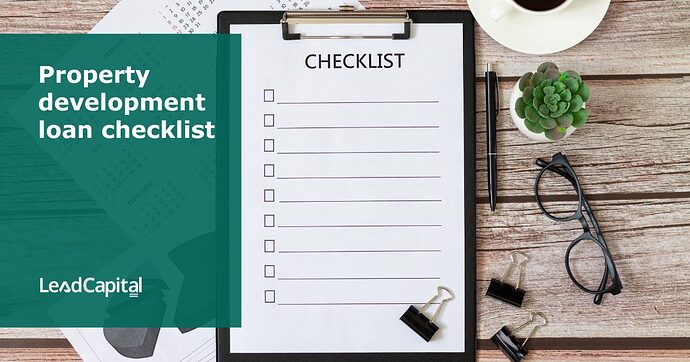Finance Checklist
Here are the essential steps and documents needed for loan application readiness, emphasising organisation to streamline the process:
Checklist Importance
Maintain a checklist and folder for loan-related documents for easy updates and applications.
Specific Documents
For employment, pay slips, tax returns, and financial statements for businesses are needed. Rental income verification and 100-point checks are also highlighted.
Assets and Liabilities
Declaration of assets, including household items and cars, alongside liabilities, is required.
Loan Variations
Requirements differ by loan type, e.g., construction loans need building contracts and insurance documents.
Frequently Asked Questions
How does maintaining a comprehensive checklist benefit the loan application process?
Having all necessary documents compiled in one place simplifies the process, especially when applying to different lenders or when additional documentation is requested. This organisational strategy reduces the stress and daunting feeling associated with gathering personal financial information by making the applicant prepared in advance.
What role do scanned copies of documents play in loan preparation according to the video?
Keeping scanned copies of all submitted loan-related documents is a crucial part of loan preparation.
Record Keeping
It ensures that the applicant has a digital record of every document submitted during the loan application process. This is beneficial for tracking what has been shared with lenders and for any future reference.
Ease of Access
Having scanned copies allows for quick access to any document without the need to search through physical files. This is particularly useful when additional copies are requested by lenders or brokers.
Preparedness
It reflects a level of preparedness and organisation that can make the loan application process smoother and less daunting. Being able to provide any requested document quickly can expedite the application process and improve the interaction with financial institutions.
What is the purpose of maintaining a checklist and folder for loan-related documents?
Maintaining a checklist and a dedicated folder for loan-related documents serves several key purposes. It helps in staying organised and ensures that all necessary documents are readily available when needed. This organisation facilitates easy updates and applications to different lenders by having all required documents in one place. It significantly reduces the stress and complexity of the loan application process, making it easier to manage.
What specific documents are needed for a loan application?
For a loan application, you will generally need to provide:
- For Employment: Recent pay slips and tax returns to verify income.
- For Businesses: Financial statements to demonstrate the business’s financial health.
- Rental Income Verification: Documents proving any rental income received.
- 100-Point Checks: Identification verification through specific documents that collectively reach 100 points, often including passports, driver’s licenses, and utility bills.
These documents help lenders assess your financial situation and determine your eligibility for a loan.
Why do you need to declare assets and liabilities?
Declaring assets and liabilities is a crucial step in the loan application process because it provides a comprehensive picture of your financial health. Assets, including household items and cars, show your financial stability and resources, while liabilities (like existing loans and debts) indicate your financial commitments. This information helps lenders evaluate your capacity to repay the loan.
How do the requirements differ by loan type?
Loan requirements can significantly differ depending on the type of loan you are applying for. For example:
- Construction Loans: Require specific documents such as detailed building contracts and relevant insurance documents, reflecting the unique risks and considerations associated with financing construction projects.
Each loan type has its own set of requirements tailored to the nature of the loan, ensuring lenders can assess the associated risks and eligibility criteria effectively.
Test Your Knowledge
Multiple Choice Questions on Finance Checklist
1. What is the primary benefit of maintaining a comprehensive checklist for loan application documents?
A) To reduce the need for digital storage
B) To ensure a faster loan approval process
C) To simplify the process and reduce stress by having all documents in one place
D) To eliminate the need for financial statements
2. Which of the following is NOT a reason for keeping scanned copies of loan-related documents?
A) To have a backup in case of physical document loss
B) To reduce the physical storage space needed
C) To increase the security of sensitive information
D) To allow for quick access when additional copies are requested
3. For a standard loan application, which document is unnecessary?
A) Recent pay slips
B) Building contracts for construction loans
C) Warranty deeds for all assets
D) Tax returns to verify income
4. Why is declaring both assets and liabilities critical in the loan application process?
A) It only demonstrates financial stability through assets.
B) Liabilities are not considered by lenders.
C) It provides a comprehensive picture of financial health, including resources and commitments.
D) Assets are considered more important than liabilities.
5. What document is specifically required for construction loans but not for other types of loans?
A) Rental income verification
B) Building contracts and relevant insurance documents
C) 100-point checks for identification
D) Recent pay slips
6. How does the loan application process benefit from the applicant being prepared with all necessary documents?
A) It increases the chances of loan rejection.
B) It expedites the application process and improves interactions with financial institutions.
C) It has no significant impact on the process.
D) It delays the process due to document verification.
7. What role does a 100-point check play in the loan application process?
A) It verifies the applicant’s employment history.
B) It assesses the applicant’s credit score.
C) It serves as identification verification through a combination of documents.
D) It evaluates the applicant’s investment knowledge.
Answers:
- C) To simplify the process and reduce stress by having all documents in one place
- C) To increase the security of sensitive information
- C) Warranty deeds for all assets
- C) It provides a comprehensive picture of financial health, including resources and commitments.
- B) Building contracts and relevant insurance documents
- B) It expedites the application process and improves interactions with financial institutions.
- C) It serves as identification verification through a combination of documents.
Assignment
Finance Checklist Practical Exercise
Objective:
To apply the concepts of organizing and preparing for a loan application process. This assignment will help students understand the importance of maintaining a comprehensive checklist, gathering specific documents, and understanding the different requirements for various types of loans.
Instructions:
Complete the following tasks, ensuring to document each step of your process. This exercise simulates the preparation required for a successful loan application, emphasising organisation and understanding of loan requirements.
Part 1: Create a Loan Application Checklist
To Do
Create a comprehensive checklist for a generic loan application. Include sections for personal information, required documents for employment, business documents (if applicable), rental income verification, and a 100-point check for identification.
Research Question
Investigate and list what specific documents could fulfill the requirements of a 100-point check for identification in your country.
To Do
Add a section for assets and liabilities. List the types of documents or information you would need to gather to declare these accurately.
Part 2: Document Collection and Organization
To Do
Simulate gathering the documents listed in your checklist. If you do not have some of the documents (e.g., pay slips or financial statements for a business), create a template for what these documents should look like based on online research.
To Do
Create digital scans (can be mock-ups for the purpose of this exercise) of your documents and organise them in digital folders, mirroring the sections of your checklist. Reflect on how this organization might benefit you in a real loan application process.
Reflection Question
How does digitising and organising your documents in advance prepare you for potential requests from lenders?
Part 3: Understanding Loan Variations
Research Question
Choose two types of loans (e.g., personal loan and construction loan) and research the specific additional documents each loan type requires. Update your checklist to include these additional requirements under separate sections.
Case Study
Imagine you are applying for a construction loan. List the additional documents you would need and explain why each document is important for this type of loan.
Reflection Question
How do the document requirements differ between the two loan types you chose, and why do you think these differences exist?
Part 4: Final Reflection
To Do
Write a one-page reflection on how maintaining a comprehensive checklist and being organized can impact the loan application process. Include thoughts on how being prepared with scanned copies of documents could expedite the process and improve interactions with financial institutions.
To Do
Discuss the importance of declaring assets and liabilities in the loan application process and how it affects a lender’s decision.
Submission Guidelines
- Compile your checklist, document templates, digital folder screenshots, research findings, case study, and final reflection into a single document.
- Ensure each part of the assignment is clearly labelled and well-organized.
- Submit your completed assignment via mail or comment.



